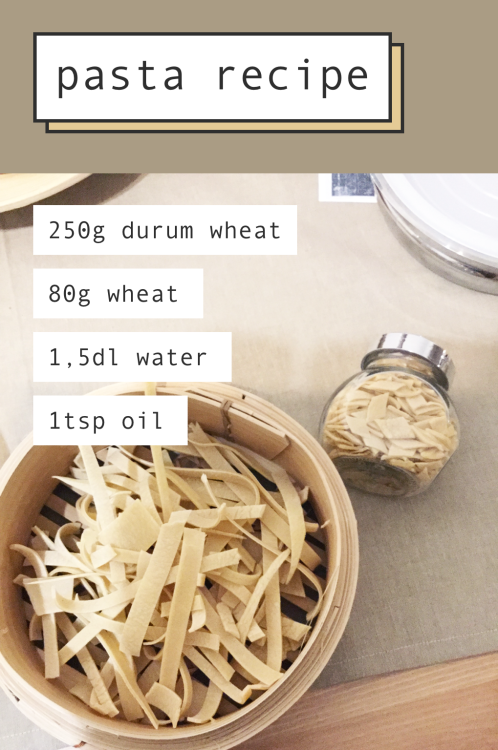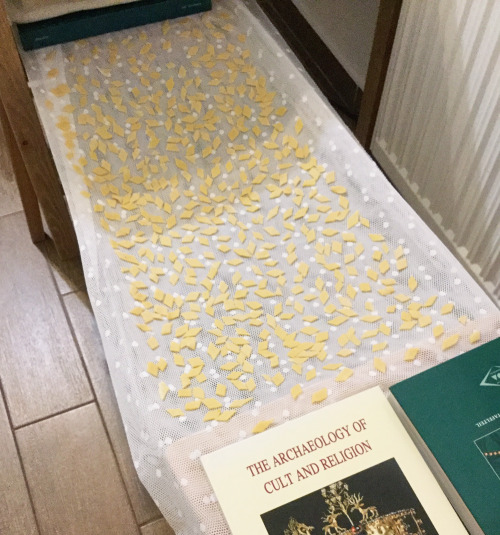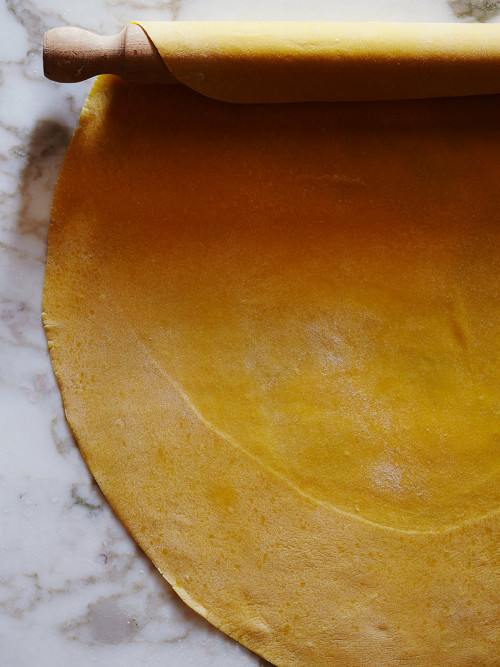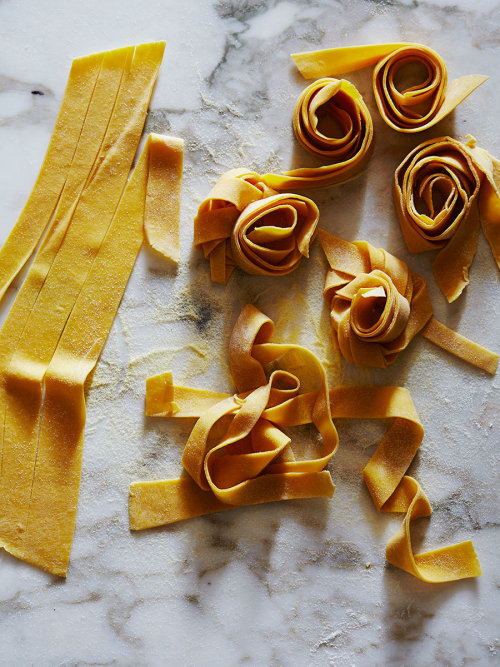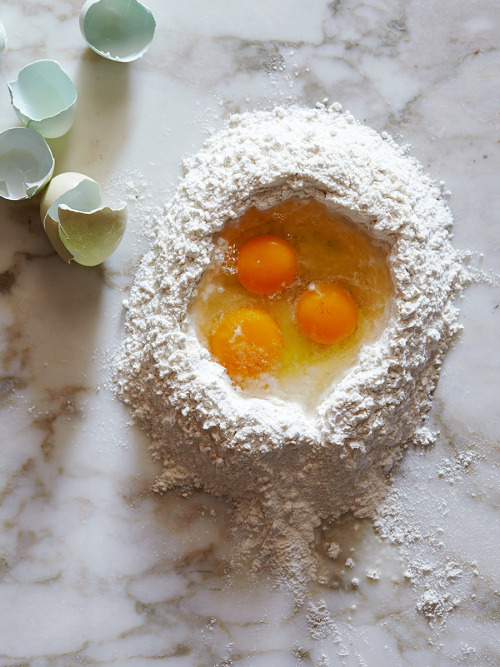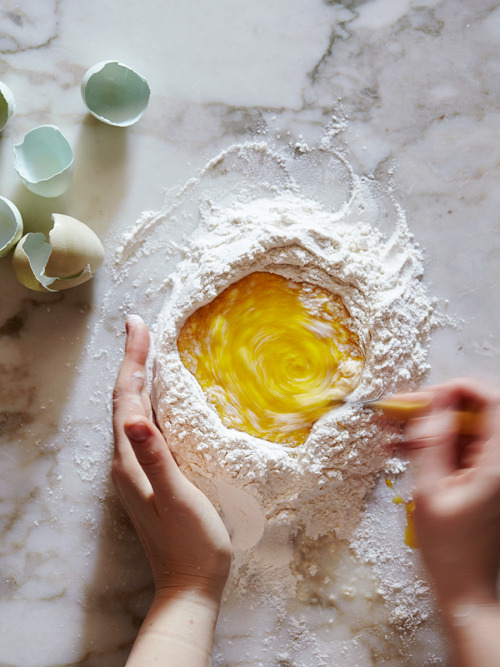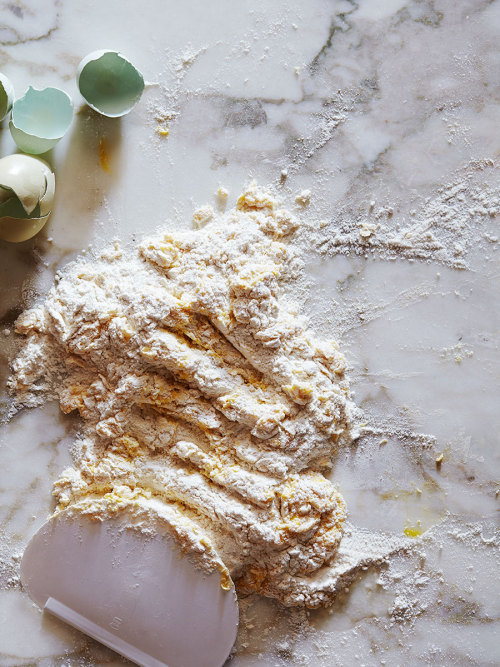#fresh pasta
IR
italy, 04/11/2019
Sometimes
Italy, 19/02/2019

Fresh air.
Italy, 24/10/2019


Everyone occasionally needs it.
Italy, 19/10/2019
My ultimate homemade pasta recipe
Once per month I spend a few hours in the kitchen to create our own pasta. It’s way more delicious compared to the ones you can buy in a store. In this way I also don’t have to buy packaged pasta.
Ingredients:
250g Durum wheat
80g Wheat
1,5dl Water
1 tsp Oil
Pinch of Salt
Step by step process:
- Mix together the two different wheats + salt
- Add the water and the oil
- Then start to kneed it until it’s surface gets smooth
- Put it in a bowl or plastic bag and let it rest for 30 mins
- Then cut it (you can learn some fancy cutting and pasta making techniques on youtube here, but I usually just cut it in a very simple form)
- Find some place to dry it, pay attention to keep them separated while drying - this part can be tricky, as you can see on my images I sometime use a big cloth or just hang them up somewhere
Don’t forget to keep it dry in a container after they are ready. If you want use them just cook them in boiling water just as you would like to do it with normal pasta.
Post link


Finally tried out the spaghetti attachment on my pasta maker! It was delicious and the process was reallyfun and satisfying, but ultimately it didn’t feel as special as the fettuccine. Maybe because I like my spaghetti more al dente? Maybe because of the dearth of other pasta shapes in Japan? A little of both, I think.
I’m sure I’ll use this attachment again for ramen (sourdough discard ramen recipe) and I’ve heard it’s also good for soba! I’m also curious to try an eggless/vegan version of this recipe (sourdough discard pasta)—I’m looking at a fewdifferentones and wondering if it’s as simple as it seems…
Now that you are an expert on egg dough. Make pappardelle. I like to score it with a knife then tear. Irregularity is the beauty of handmade pasta. More tearing just allow more places for the sauce to grab on.
Post link
The Perfect Egg Dough
My first attempt at fresh pasta was an egg dough. After all, it is THE dough for fresh pasta. At least that’s what google tells me. And it’s “simple”. Just wazz it all up in your food processor and your good to go. There are a million recipes to choose from with varying amounts of salt, olive oil, water, egg yolks, whole eggs, AP flour, 00 flour, semolina… for something so simple, the variations are seemingly endless.
My first attempt at an egg dough was a complete flop. So was the 50th. It was always too tough to work with. No matter what recipe I tried. Sure I could put together a dough that was tasty enough, but I hadn’t found the rightone.
Finally last year, I studied pasta in Bologna, the center for fresh pasta in Italy. The Bolognese egg dough is like a pillow. So soft and easy to work with, the perfect bite; everything about it is ideal.
The recipe is simple, straight forward, and never fails:
per person, 100g 00 flour, 60g liquid (egg + warm water if needed)
As in all things Italian, you must use the best ingredients you can find.
The only flour to consider is 00 flour. Period.
You want your eggs to be big and fresh with bright orange yolks. In Italy there are eggs at the market specifically for pasta. The closest I’ve been able to find in the States are Pete & Gerry’s beautiful blue Heirloom Eggs (available at Whole Foods). Sometimes even these beauties aren’t equal to 60g each, so just add warm water until you get there. I prefer to use the fontana method pictured here, but you can definitely use your food processor… if you must. But honestly, we aren’t making fresh pasta every day, pour yourself a nice glass of wine, and do it slowly, at a moment when you have the time. It’s a beautiful process, I promise you’ll enjoy it more this way.
Weigh the flour. Pour it directly onto your work surface. Burrow a hole in the middle— deeper rather than wider, go all the way to the surface so the walls are as high as they can be.
Measure your liquid and carefully place it in the middle. Using a fork, with care, beat the eggs. Once they are combined as you would do for an omelet, begin to grab a little flour at a time from the edges, and continue to whisk. Repeat this process of incorporating a little flour at time and slowly but surely you will end up with a gloppy egg mixture that begins to pull away from the surface and is now too thick to beat. At this point, you are done with the fork. Roll up your sleeves, grab a pastry scraper and with confidence, starting at the bottom of the flour, scrape up through to the top, to clean any wet ingredients from the surface. Use the scraper to mix further, continuing to scrape the surface and mashing up the pieces of the dough. Once you can bring it together with your hands, do so, set it aside and clean off your surface and your hands. You don’t want all those small, dry bits of dough in your pasta. They will only keep the final dough from being as even and smooth as possible.
Now, you knead. Set yourself up with a finger bowl of warm water— I personally also like to have a water spray bottle on hand. As you knead, midway through, the dough may become drier and harder to work with, as it will be exposed to the air for quite a while. If this happens, simply dip your fingers in the water and continue kneading. Dip too much? Sprinkle with a little more flour. It’s important to remember not to have the dough covered with flour, however tempting it may be. Unless it’s sticking to your hands or your work surface, you shouldn’t add any. You want to have traction when kneading, and more flour will just have you slipping and sliding all over your work surface and create a rock hard dough.
Please be aware, weather can play a part in this too. If it’s very warm and humid you will need less liquid. As the amount is difficult to determine, it’s easier to just sprinkle a bit more flour incorporating slowly as you go if necessary.
Don’t strangle the dough, massage it using the palm of your hand. Not sure what I mean? Watch this master Nonna, starting at 3:10. She is working with the gloriously simple semolina + water dough, but the kneading technique is universal. You can learn everything I know about that dough here.
Knead for 10-15 minutes. How can you tell when you’re done? Take a chef’s knife and slice the dough directly down the middle. If you see air bubbles, keep going (the one pictured needs 3 more minutes or so). What you want in the end is a seamless, smooth dough inside and out. When it’s ready, cover it with cling wrap and leave it out to rest for at least 30 minutes. If you will not roll out the dough within an hour or so, put it the fridge. It will keep for 3 days. When you are going to use it, leave it out for at least 30 minutes so it can come to room temperature. It will make your life much easier.
At this point you are ready to make tagliatelle, pappardelle, lasagna, filled pasta and more!
Post link
Fresh Egg Pasta
Ingredients:
- 1 ⅔ cups Italian “00” flour (or half Italian “00” flour and half Farina di Semola)
- 2 medium or large eggs
- 1 tablespoon olive oil
- A pinch of sea salt
Method:
- Sift the flour onto a clean work surface and make a well in the centre with your fist.
- Break the eggs into the well and add the oil and a pinch of salt to the well.
- Gradually mix the egg mixture into the flour using the fingers of one hand, bringing the ingredients together into a firm dough. If the dough feels too dry, add a few drops of water; if it’s too wet, add a little more flour.
- Knead the pasta until smooth for about 2 - 5 minutes. Lightly massage it with a hint of olive oil, put the dough in a plastic food bag, and allow it to rest at room temperature for at least 30 minutes. The pasta will be much more elastic after resting.
- Feed the blob of pasta dough through the widest setting of a pasta machine. As the sheet of dough comes out of the machine, fold it into thirds and then feed it through the rollers again, still on the widest setting. Pass the dough through this setting a total of 4 or 5 times. This effectively kneads the dough, ensuring the resulting pasta is silky smooth.
- Pass the pasta through the machine again, starting at the widest setting and gradually reducing the settings, one pass at a time, until the pasta achieves the required thickness. The pasta sheet will become very long; if you are having trouble keeping the dough from folding onto itself or are making ravioli, cut the sheet of dough in half and feed each half through separately. Generally the second-from-last setting is best for tagliatelle and the last setting is best for ravioli and any other shapes that are to be filled.
- After the pasta has reached the requisite thickness, hang it over a broom handle or the back of a chair to dry a little; this will make cutting it easier in humid weather, as it will not be so sticky. Or, if you’re in a hurry, you can dust the pasta with a little flour and place it on clean kitchen towels and let it rest.
- Shape the pasta by hand or pass the pasta through the chosen cutters (tagliatelle, etc.) and then drape the cut pasta over the broom handle or chair back again to dry a little, until ready to cook.
Post link

